Antibiotic Treatments: Mechanisms, Applications, Side Effects, and Proper Usage Guide
How do antibiotics combat bacterial infections. What are the main types of antibiotics and their uses. Why is antibiotic resistance a growing concern. How can patients use antibiotics responsibly to minimize side effects and resistance.
The Fundamentals of Antibiotic Action
Antibiotics are powerful medications designed to fight bacterial infections. They work by either killing bacteria outright or inhibiting their growth and reproduction. Understanding the mechanisms of antibiotic action is crucial for both healthcare providers and patients.
How exactly do antibiotics target harmful bacteria? There are several key mechanisms:
- Interfering with bacterial cell wall synthesis
- Disrupting protein production in bacteria
- Inhibiting bacterial DNA replication and repair
- Altering bacterial cell membrane function
Different classes of antibiotics employ various strategies to combat infections. For instance, penicillins and cephalosporins disrupt cell wall formation, while tetracyclines and macrolides interfere with protein synthesis. Fluoroquinolones target bacterial DNA, and polymyxins affect cell membrane integrity.

Bactericidal vs. Bacteriostatic Antibiotics
Antibiotics can be categorized based on their effect on bacteria:
- Bactericidal antibiotics: These directly kill bacteria
- Bacteriostatic antibiotics: These inhibit bacterial growth, allowing the immune system to eliminate the weakened pathogens
Do bactericidal antibiotics always work faster than bacteriostatic ones? Not necessarily. The effectiveness of an antibiotic depends on various factors, including the specific pathogen, the site of infection, and the patient’s immune response.
Common Types of Antibiotics and Their Uses
Antibiotics come in various forms, each designed to target specific types of bacterial infections. Understanding the main classes of antibiotics can help patients better comprehend their treatment plans.
Penicillins and Cephalosporins
These beta-lactam antibiotics are widely used for many common infections. They’re effective against a broad spectrum of bacteria and are often prescribed for:
- Respiratory tract infections
- Skin infections
- Urinary tract infections
- Dental infections
Macrolides
Macrolides like azithromycin and erythromycin are often used to treat:

- Respiratory infections
- Skin infections
- Sexually transmitted infections
Fluoroquinolones
These broad-spectrum antibiotics are effective against many types of bacteria. They’re commonly prescribed for:
- Urinary tract infections
- Respiratory infections
- Gastrointestinal infections
Tetracyclines
Tetracyclines are versatile antibiotics used to treat various conditions, including:
- Acne
- Respiratory infections
- Tick-borne diseases
Are certain antibiotics more suitable for specific infections? Indeed, choosing the right antibiotic depends on factors such as the type of bacteria causing the infection, the infection’s location, and the patient’s medical history.
The Growing Threat of Antibiotic Resistance
Antibiotic resistance is a significant global health concern. It occurs when bacteria evolve to withstand the effects of antibiotics, making infections harder to treat. The World Health Organization (WHO) has declared antibiotic resistance “one of the biggest threats to global health, food security, and development today.”
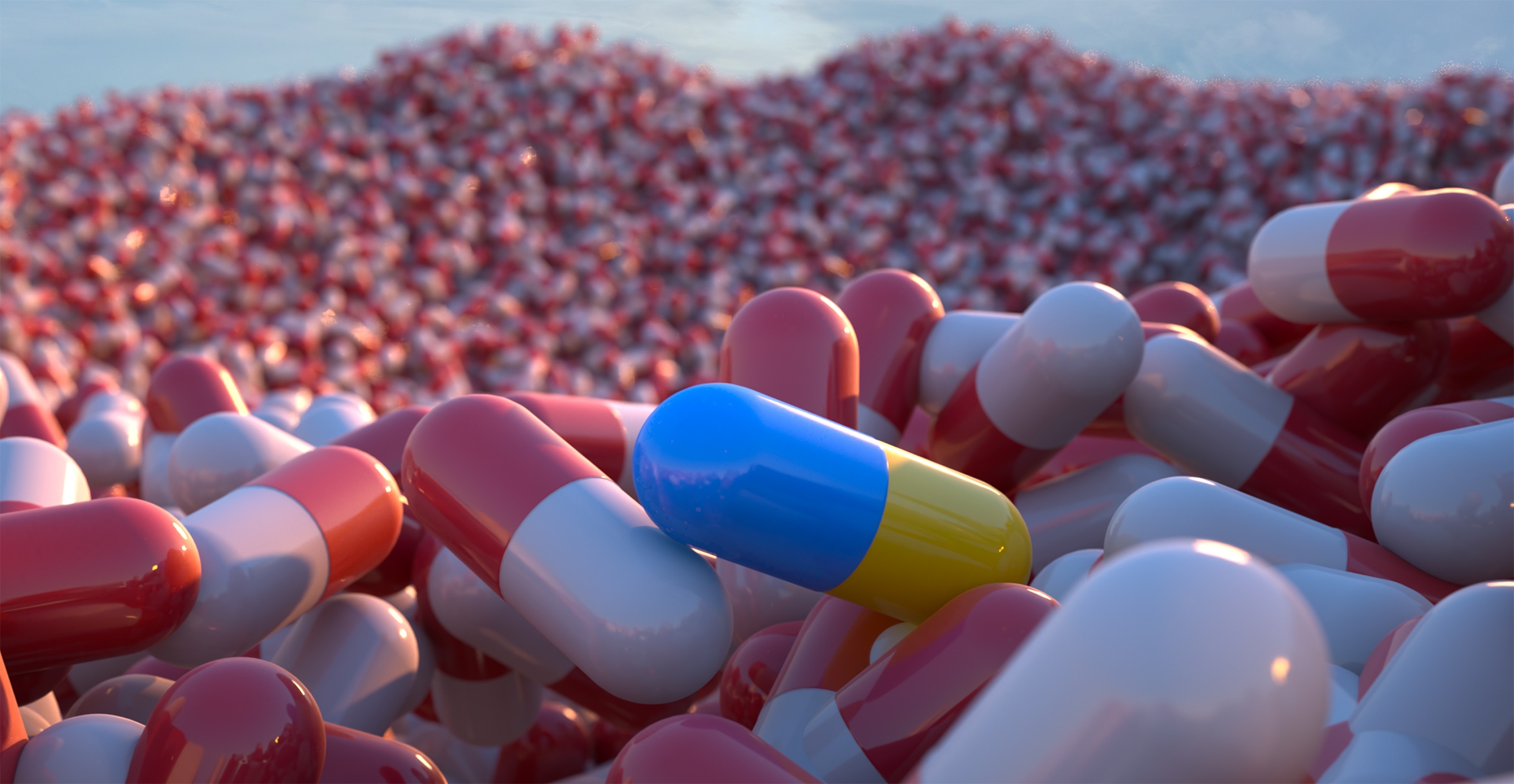
Why is antibiotic resistance on the rise? Several factors contribute to this growing problem:
- Overuse and misuse of antibiotics in humans and animals
- Lack of new antibiotic development
- Poor infection control practices in healthcare settings
- Inadequate sanitation and hygiene in some regions
The consequences of antibiotic resistance are severe. According to the Centers for Disease Control and Prevention (CDC), at least 2,049,442 illnesses in the United States are caused annually by resistance to medicines prescribed to treat bacterial or fungal infections. Tragically, 23,000 people die each year when these drugs fail to work.
Mechanisms of Antibiotic Resistance
How do bacteria become resistant to antibiotics? Several mechanisms contribute to this phenomenon:
- Genetic mutations: Bacteria can naturally evolve to resist antibiotics through random DNA mutations.
- Horizontal gene transfer: Bacteria can share resistance genes with other bacteria, even across species.
- Enzymatic inactivation: Some bacteria produce enzymes that can break down or modify antibiotics.
- Efflux pumps: Certain bacteria develop mechanisms to pump antibiotics out of their cells.
- Altered target sites: Bacteria can modify the cellular structures that antibiotics typically target.
Is antibiotic resistance reversible? While it’s challenging to reverse resistance once it develops, reducing antibiotic use and implementing proper stewardship programs can help slow its spread.

Proper Antibiotic Usage and Patient Responsibility
Responsible antibiotic use is crucial in combating resistance and ensuring these life-saving drugs remain effective. Patients play a vital role in this effort by following their healthcare provider’s instructions and using antibiotics only when necessary.
How can patients use antibiotics responsibly? Here are some key guidelines:
- Take antibiotics only when prescribed by a healthcare professional
- Complete the full course of antibiotics, even if symptoms improve
- Never share antibiotics with others or use leftover antibiotics
- Dispose of unused antibiotics properly
- Practice good hygiene to prevent the spread of infections
Can antibiotics treat viral infections? No, antibiotics are ineffective against viruses. Using antibiotics for viral infections, such as the common cold or flu, contributes to antibiotic resistance without providing any health benefits.
The Importance of Antibiotic Stewardship
Antibiotic stewardship programs aim to optimize antibiotic use in healthcare settings. These initiatives involve:

- Educating healthcare providers and patients about proper antibiotic use
- Implementing guidelines for antibiotic prescribing
- Monitoring antibiotic use and resistance patterns
- Promoting the development of new antibiotics and alternative treatments
By participating in antibiotic stewardship efforts, patients can help preserve the effectiveness of these critical medications for future generations.
Side Effects and Risks Associated with Antibiotic Use
While antibiotics are generally safe and effective when used appropriately, they can cause side effects and carry certain risks. Understanding these potential issues can help patients make informed decisions about their treatment.
Common Side Effects
What are the most frequent side effects of antibiotics? Common side effects include:
- Gastrointestinal disturbances (nausea, vomiting, diarrhea)
- Yeast infections
- Skin rashes
- Headaches
- Fatigue
These side effects are usually mild and resolve on their own. However, patients should report persistent or severe symptoms to their healthcare provider.

Serious Adverse Reactions
In rare cases, antibiotics can cause more severe reactions. These may include:
- Allergic reactions, including anaphylaxis
- Severe skin reactions (e.g., Stevens-Johnson syndrome)
- Kidney or liver damage
- Blood disorders
- Tendon rupture (associated with fluoroquinolones)
Patients should seek immediate medical attention if they experience signs of a severe allergic reaction or other serious side effects.
Antibiotic-Associated Diarrhea and C. difficile Infections
Antibiotics can disrupt the natural balance of bacteria in the gut, leading to diarrhea. In some cases, this can result in a Clostridioides difficile (C. difficile) infection, which can be severe and potentially life-threatening.
How can patients reduce the risk of antibiotic-associated diarrhea? Some strategies include:
- Taking probiotics during and after antibiotic treatment
- Staying hydrated
- Avoiding dairy products if lactose intolerance is a concern
- Reporting persistent or severe diarrhea to a healthcare provider
Innovations in Antibiotic Development and Alternative Therapies
The fight against antibiotic resistance requires ongoing research and development of new treatment strategies. Scientists and pharmaceutical companies are exploring various approaches to combat bacterial infections more effectively.

Novel Antibiotic Discovery
Researchers are constantly searching for new antibiotics, often looking to unconventional sources. Some promising areas of exploration include:
- Marine environments
- Soil microorganisms
- Plant-derived compounds
- Synthetic antibiotics designed using advanced computational methods
How are new antibiotics developed? The process typically involves:
- Screening potential compounds for antimicrobial activity
- Optimizing lead compounds for efficacy and safety
- Conducting preclinical studies in laboratory animals
- Performing clinical trials in humans
- Obtaining regulatory approval for use in patients
Alternative Approaches to Fighting Bacterial Infections
In addition to traditional antibiotics, researchers are exploring alternative strategies to combat bacterial infections. These include:
- Bacteriophage therapy: Using viruses that specifically target bacteria
- Antimicrobial peptides: Naturally occurring molecules with antibacterial properties
- Immunomodulatory therapies: Enhancing the body’s natural immune response
- Antivirulence strategies: Targeting bacterial virulence factors without killing the bacteria
- Combination therapies: Using multiple drugs or approaches simultaneously
Can these alternative approaches replace traditional antibiotics? While they show promise, most of these strategies are still in the early stages of development and require further research before they can be widely implemented in clinical practice.

The Role of Artificial Intelligence in Antibiotic Discovery
Artificial intelligence (AI) and machine learning are playing an increasingly important role in antibiotic discovery and development. These technologies can:
- Analyze vast datasets to identify potential new antibiotics
- Predict antibiotic resistance patterns
- Optimize drug design and dosing strategies
- Accelerate the drug discovery process
How effective is AI in discovering new antibiotics? While still in its early stages, AI has already shown promise. In 2020, researchers used a machine learning algorithm to identify a novel antibiotic called halicin, which shows activity against several antibiotic-resistant bacteria.
Global Efforts to Combat Antibiotic Resistance
Addressing the challenge of antibiotic resistance requires a coordinated global effort. Various international organizations, governments, and healthcare institutions are working together to implement strategies to combat this growing threat.
World Health Organization Initiatives
The World Health Organization (WHO) plays a crucial role in coordinating global efforts to address antibiotic resistance. Some of their key initiatives include:

- The Global Action Plan on Antimicrobial Resistance
- World Antibiotic Awareness Week
- Global Antimicrobial Resistance Surveillance System (GLASS)
- Guidelines for the responsible use of antimicrobials in human and animal health
How effective are these global initiatives? While progress has been made, combating antibiotic resistance requires ongoing commitment and collaboration from all stakeholders.
National Action Plans
Many countries have developed national action plans to address antibiotic resistance. These plans typically focus on:
- Improving surveillance of antibiotic resistance
- Enhancing infection prevention and control measures
- Optimizing antibiotic use in human and animal health
- Promoting research and development of new antibiotics and alternatives
- Increasing public awareness and education
Are national action plans making a difference? While progress varies by country, many nations have reported improvements in antibiotic stewardship and reductions in antibiotic use since implementing these plans.

One Health Approach
The One Health approach recognizes the interconnectedness of human, animal, and environmental health in addressing antibiotic resistance. This holistic strategy involves:
- Collaboration between human and veterinary medicine
- Monitoring antibiotic use in agriculture and food production
- Addressing environmental contamination with antibiotics
- Promoting sustainable practices that reduce the need for antibiotics
Why is the One Health approach important? Antibiotic resistance can spread between humans, animals, and the environment. Addressing the issue from multiple angles increases the likelihood of success in combating resistance.
In conclusion, antibiotic treatments remain a cornerstone of modern medicine, but their effectiveness is threatened by the rise of antibiotic resistance. By understanding how antibiotics work, using them responsibly, and supporting global efforts to combat resistance, we can help preserve these life-saving drugs for future generations. As research continues to uncover new treatment strategies and alternative therapies, there is hope that we can stay one step ahead of evolving bacterial threats.
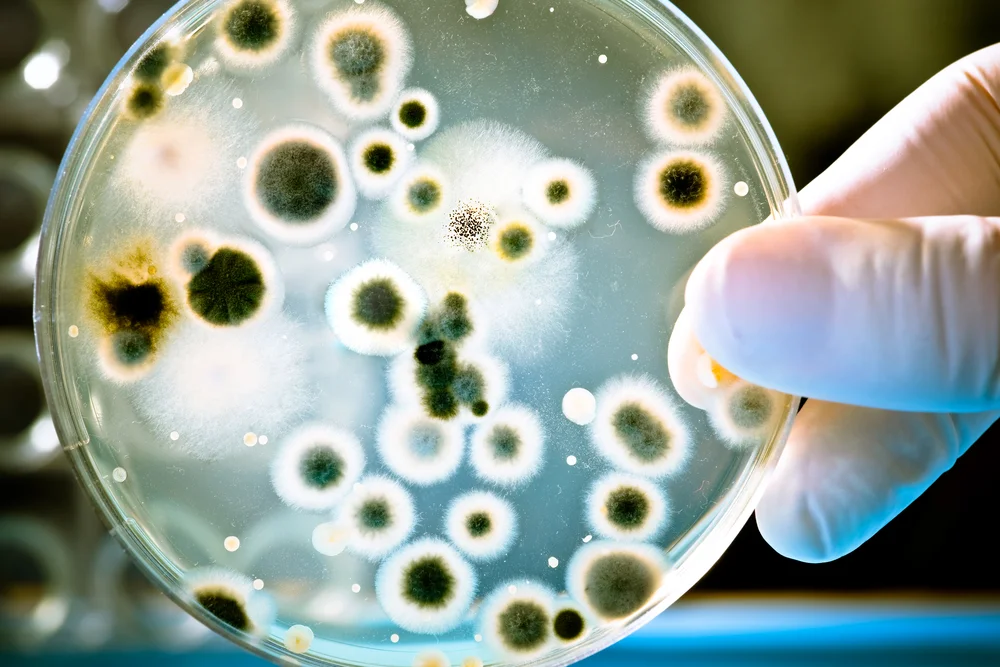
Antibiotic resistance: What causes it?
Most of us will have taken antibiotics at some point in our lives. But what if nothing happens the next time you pop one of those little bug-busting pills? Your life could be in serious danger.
Share on PinterestThe WHO call antibiotic resistance ‘one of the biggest threats to global health.’
Bacteria are an integral part of our ecosystem and we share our bodies with many of these tiny creatures. However, they can be the root of serious health problems.
There are roughly as many human cells as bacterial cells in our bodies, and our microscopic passengers pay their way by helping our immune system and contributing to our metabolism.
But bacteria come in all manner of guises. Some can turn from friend to foe, while others are just plain nasty and will make us sick at any chance they get.
Since their discovery in the 1920s and their introduction into mainstream medicine after World War Two, we’ve been relying on antibiotics to keep pathogenic bacteria at bay.
Antibacterial resistance is on the rise, however. According to the Centers for Disease Control and Prevention (CDC), each year in the United States, at least 2,049,442 illnesses are caused by resistance to medicines prescribed to treat bacterial or fungal infections. What is more, 23,000 people die each year when these drugs fail to work.
So, why have our once reliable antibacterials stopped working, and how do the pesky bugs manage to outfox us? It’s all about mutations.
Bacteria are prone to DNA mutations. This is part of their natural evolution and allows them to constantly adapt their genetic makeup. When one bug naturally becomes resistant to a drug, it survives when all others are killed.
Now it’s a race against the clock.
How quickly can this one bacterium adapt to the new mutation, and how quickly can it replicate in the face of species eradication? If the bug comes on out top, it’s bad news for the infected individual and bad news for society at large: the drug-resistant bacterium will likely spread.
Not only has it evaded the grim reaper, but it can also now spread the love by passing the resistance to its numerous offspring, who will soon be the dominant species on the block.
Bacteria are also able to pass genes to other bacteria. This is known as horizontal gene transfer, or “bacterial sex.” While this process is actually quite rare, bacteria are highly mobile creatures, which gives them plenty of opportunity to come into contact with other microbes and pass on their mutated genes.
But how do genetic mutations equip bacteria with the skills to outsmart antibiotics?
A study recently published in Nature Communications sheds new light on how Echerichia coli and other members of the Enterobacteria family fight off commonly used antibiotics.
A gene called mar is commonly shared by family members. Some of the proteins encoded in this gene can switch on other genes, explain researchers from the University of Birmingham’s Institute of Microbiology and Infection in the United Kingdom.
“We found two completely unexpected mechanisms,” says senior study author Prof. David Grainger, “that bacteria use to protect themselves from antibiotics. One protected their DNA from the harmful effects of fluoroquinolone antibiotics, and the other prevented doxycyline getting inside bacteria.”
But finding out how Enterobacteria combat antibiotics is only the first step in this decade-long research project.
First study author Prateek Sharma, Ph.D., says that “the resistance mechanisms that we identified are found in many different species of bacteria therefore, our research could lead to the discovery of molecules that could be developed into new drugs that can treat bacterial infections.”
The World Health Organization (WHO) call antibiotic resistance “one of the biggest threats to global health, food security, and development today.” The need for new drugs is great.
This week is World Antibiotic Awareness Week. The WHO aim to warn people that inappropriate use of antimicrobials makes drug resistance worse.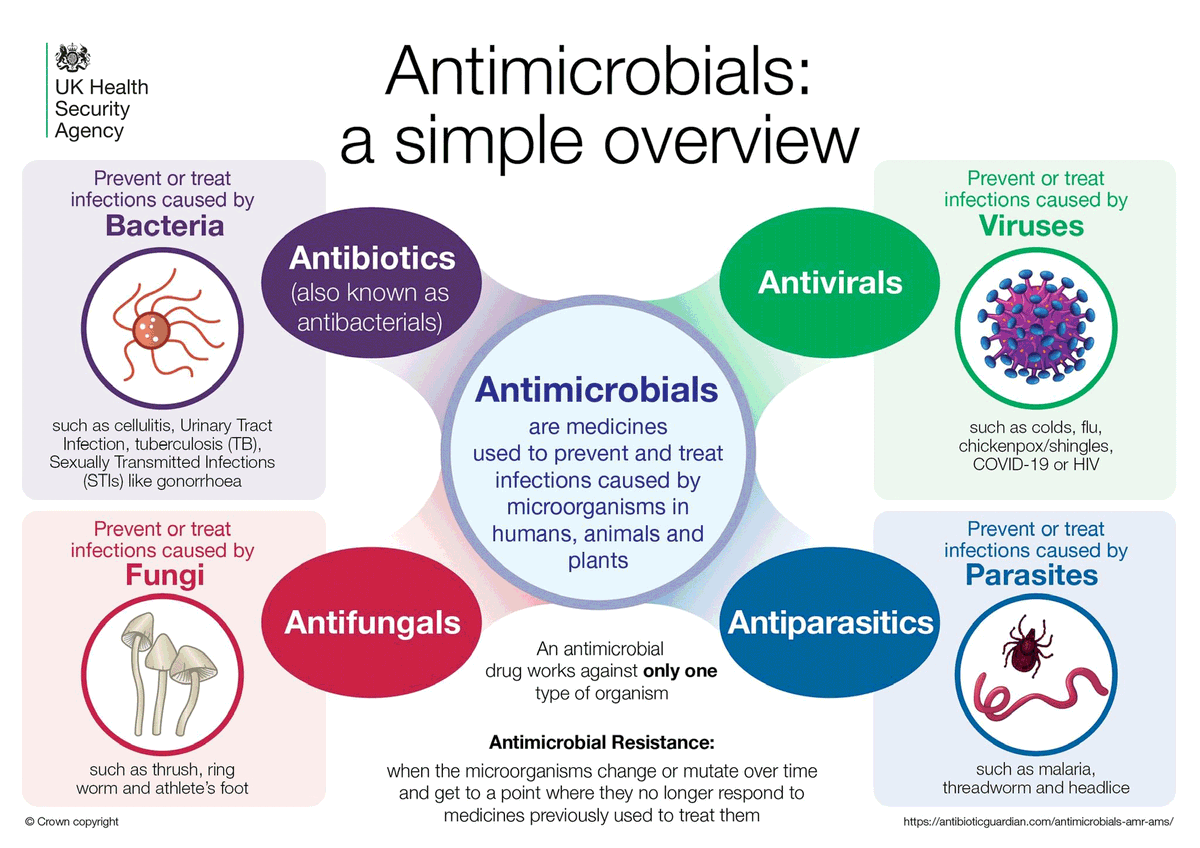 This includes both overuse and underuse.
This includes both overuse and underuse.
This year, they urge everyone to “[s]eek advice from a qualified healthcare professional before taking antibiotics.”
To find out more, here is video from the WHO explaining why they think that “everyone has a role to play to help reduce antibiotic resistance.”
Side effects, dosage, uses, and more
- Nitrofurantoin oral capsule is available as both generic and brand-name drugs. Brand names: Macrobid and Macrodantin.
- Nitrofurantoin is also available in an oral suspension.
- Nitrofurantoin oral capsule is used to prevent and treat urinary tract infections that are caused by certain bacteria.
- Lung inflammation warning: This drug may cause lung inflammation. This is a rare side effect and is more likely to happen if you take the drug for longer than 6 months. Symptoms of lung inflammation can include tiredness, fever, chills, cough, chest pain, and shortness of breath.
 If you have any of these symptoms, contact your doctor right away.
If you have any of these symptoms, contact your doctor right away. - Liver problems warning: This drug may cause liver inflammation or liver injury. If you’re taking nitrofurantoin for long-term therapy, your doctor will monitor your liver with blood tests. Tell your doctor if you have symptoms of liver problems while taking this drug. These include itching, yellowing of your skin or the whites of your eyes, nausea, vomiting, dark urine, and loss of appetite.
- Nerve damage warning: This drug may cause nerve damage. This damage can cause numbness and pain, especially in your hands and feet.
- Red blood cell damage warning: This drug may cause hemolysis (a type of red blood cell damage). Symptoms of hemolysis include tiredness, weakness, and pale skin. Hemolysis goes away after you stop taking this drug.
- Diarrhea warning: This drug may cause mild or severe diarrhea. Tell your doctor right away if you have diarrhea while taking this drug.
 If your diarrhea is mild, it may stop after you stop taking this drug. If your diarrhea is more severe, it may not stop after you stop taking this drug, and you could be at risk of severe dehydration. If you have severe diarrhea, your doctor may give you fluids and treat the bacteria causing your diarrhea with antibiotics. Check with your doctor before treating diarrhea.
If your diarrhea is mild, it may stop after you stop taking this drug. If your diarrhea is more severe, it may not stop after you stop taking this drug, and you could be at risk of severe dehydration. If you have severe diarrhea, your doctor may give you fluids and treat the bacteria causing your diarrhea with antibiotics. Check with your doctor before treating diarrhea.
Nitrofurantoin is a prescription drug that comes as an oral capsule and an oral suspension.
Nitrofurantoin oral capsule is available as the brand-name drugs Macrobid and Macrodantin. It’s also available as a generic drug. Generic drugs usually cost less than the brand-name version. In some cases, they may not be available in all strengths or forms as the brand-name drug.
Why it’s used
Nitrofurantoin oral capsule treats and prevents urinary tract infections that are caused by certain types of bacteria.
How it works
Nitrofurantoin belongs to a class of drugs called antimicrobials or antibiotics. A class of drugs is a group of medications that work in a similar way. These drugs are often used to treat similar conditions.
A class of drugs is a group of medications that work in a similar way. These drugs are often used to treat similar conditions.
Nitrofurantoin helps kill the bacteria that cause urinary tract infections. It only works against certain types of bacteria.
Nitrofurantoin oral capsule may cause drowsiness. It may also cause other side effects.
More common side effects
The more common side effects of nitrofurantoin can include:
- nausea
- vomiting
- loss of appetite
- stomach pain
- diarrhea
- numbness in your hands and feet
- pain in your hands and feet
- weakness
- dizziness
- headache
- drowsiness
If these effects are mild, they may go away within a few days or a couple of weeks. If they’re more severe or don’t go away, talk with your doctor or pharmacist.
Serious side effects
Call your doctor right away if you have serious side effects. Call 911 if your symptoms feel life threatening or if you think you’re having a medical emergency. Serious side effects and their symptoms can include the following:
Serious side effects and their symptoms can include the following:
- Lung inflammation. Symptoms can include:
- tiredness
- shortness of breath
- fever
- chills
- cough
- chest pain
- Liver problems. Symptoms can include:
- itching
- yellowing of your skin or the whites of your eyes
- nausea or vomiting
- dark urine
- loss of appetite
- Nerve damage. Symptoms can include:
- numbness or tingling in your hands and feet
- muscle weakness
- Hemolysis (red blood cell damage). Symptoms can include:
- tiredness
- weakness
- pale skin
- Diarrhea. Symptoms can include:
- very loose or watery stools
- bloody stools
- stomach pain
Disclaimer: Our goal is to provide you with the most relevant and current information. However, because drugs affect each person differently, we cannot guarantee that this information includes all possible side effects. This information is not a substitute for medical advice. Always discuss possible side effects with a healthcare professional who knows your medical history.
This information is not a substitute for medical advice. Always discuss possible side effects with a healthcare professional who knows your medical history.
Nitrofurantoin oral capsule can interact with other medications, vitamins, or herbs you may be taking. An interaction is when a substance changes the way a drug works. This can be harmful or prevent the drug from working well.
To help avoid interactions, your doctor should manage all of your medications carefully. Be sure to tell your doctor about all medications, vitamins, or herbs you’re taking. To find out how this drug might interact with something else you’re taking, talk with your doctor or pharmacist.
Examples of drugs that can cause interactions with nitrofurantoin are listed below.
Drugs you should not use with nitrofurantoin
Do not take these drugs with nitrofurantoin. Examples of these drugs include:
- Antacids such as Gaviscon that contain magnesium trisilicate: These drugs can make nitrofurantoin less effective.

- Probenecid and sulfinpyrazone: Taking these drugs while you’re taking nitrofurantoin may cause harmful levels of nitrofurantoin to build up in your blood. High levels of this drug in your body raise your risk of side effects, while reduced levels in your urine can make the drug less effective.
Disclaimer: Our goal is to provide you with the most relevant and current information. However, because drugs interact differently in each person, we cannot guarantee that this information includes all possible interactions. This information is not a substitute for medical advice. Always speak with your healthcare professional about possible interactions with all prescription drugs, vitamins, herbs and supplements, and over-the-counter drugs that you are taking.
Nitrofurantoin oral capsule comes with several warnings.
Allergy warning
Nitrofurantoin can cause a severe allergic reaction. Symptoms can include:
- trouble breathing
- swelling of your throat or tongue
If you have an allergic reaction, call your doctor or local poison control center right away. If your symptoms are severe, call 911 or go to the nearest emergency room.
If your symptoms are severe, call 911 or go to the nearest emergency room.
Don’t take this drug again if you’ve ever had an allergic reaction to it. Taking it again could be fatal (cause death).
Warnings for people with certain health conditions
For people with kidney disease: If you have a history of kidney disease, you may not be able to clear nitrofurantoin from your body well. This could lead to a buildup of nitrofurantoin. This raises your risk of side effects.
For people with liver disease: You should not use nitrofurantoin. It can make your liver damage worse.
Warnings for other groups
For pregnant women: During weeks 0–37 of pregnancy, nitrofurantoin is a category B pregnancy drug. That means two things:
- Research in animals has not shown a risk to the fetus when the mother takes the drug.
- There aren’t enough studies done in humans to show if the drug poses a risk to the fetus.

Talk with your doctor if you’re pregnant or plan to become pregnant. Animal studies do not always predict the way humans would respond.
Nitrofurantoin can cause red blood cell problems in a newborn. For this reason, women who are pregnant should not take this drug:
- when they are at term (38–42 weeks of pregnancy),
- during labor and delivery
- if they think they are in labor
Call your doctor if you become pregnant while taking this drug.
For women who are breastfeeding: Nitrofurantoin may pass into breast milk and cause side effects in a child who is breastfed. Talk with your doctor about breastfeeding your child. You may need to decide whether to stop breastfeeding or stop taking this medication.
For seniors: The kidneys of older adults may not work as well as they used to. This can cause your body to process drugs more slowly. As a result, more of a drug stays in your body for a longer time. This raises your risk of side effects. If you’re older than 65 years, nitrofurantoin may not be a good choice for you.
This raises your risk of side effects. If you’re older than 65 years, nitrofurantoin may not be a good choice for you.
For children: Do not use any form of nitrofurantoin in infants younger than 1 month. Macrodantin and its generic form are safe for use in children older than 1 month. Macrobid and its generic form have not been studied in children younger than 12 years of age. They should not be used in this age group.
This dosage information is for nitrofurantoin oral capsule. All possible dosages and drug forms may not be included here. Your dosage, drug form, and how often you take the drug will depend on:
- your age
- the condition being treated
- how severe your condition is
- other medical conditions you have
- how you react to the first dose
Forms and strengths
Generic: Nitrofurantoin
- Form: oral capsule (generic for Macrobid)
- Strength: 100 mg (75 mg nitrofurantoin monohydrate and 25 mg nitrofurantoin macrocrystals)
- Form: oral capsule (generic for Macrodantin)
- Strengths: 25 mg, 50 mg, 100 mg
Brand: Macrobid
- Form: oral capsule
- Strength: 100 mg (75 mg nitrofurantoin monohydrate and 25 mg nitrofurantoin macrocrystals)
Brand: Macrodantin
- Form: oral capsule
- Strengths: 25 mg, 50 mg, 100 mg
Dosage for treatment of urinary tract infections
Adult dosage (ages 18–64 years)
- Macrodantin and its generic form: 50–100 mg four times per day.
 Length of treatment varies.
Length of treatment varies. - Macrobid and its generic forms: 100 mg every 12 hours for 7 days.
Child dosage (ages 12–17 years)
- Macrodantin and its generic form: 5–7 mg/kg of body weight per day in four divided doses. Length of treatment may vary.
- Macrobid and its generic form: 100 mg every 12 hours for 7 days.
Child dosage (ages 1 month–11 years)
- Macrodantin and its generic form: 5–7 mg/kg of body weight per day in four divided doses. Length of treatment may vary.
- Macrobid and its generic form: These drugs have not been studied in children younger than 12 years. They should not be used in this age group.
Child dosage (ages 0–1 month)
- Macrodantin and its generic form: These drugs should not be used in children younger than 1 month.
- Macrobid and its generic form: These drugs have not been studied in children younger than 12 years. They should not be used in this age group.

Senior dosage (ages 65 years and older)
The kidneys of older adults may not work as well as they used to. This can cause your body to process drugs more slowly. As a result, more of a drug stays in your body for a longer time. This raises your risk of side effects. Your doctor may start you on a lowered dosage or a different treatment schedule. This can help keep levels of this drug from building up too much in your body.
Dosage for prevention of urinary tract infections
Adult dosage (ages 18–64 years)
- Macrodantin and its generic form: 50–100 mg at bedtime.
- Macrobid and its generic form: These drugs are not used for the prevention of urinary tract infections.
Child dosage (ages 1 month–17 years)
- Macrodantin and its generic form: 1 mg/kg of body weight once per day or divided into two doses per day.
- Macrobid and its generic form: These drugs are not used for the prevention of urinary tract infection.

Child dosage (ages 0–1 month)
- Macrodantin and its generic form: These drugs should not be used in children younger than 1 month.
- Macrobid and its generic form: These drugs are not used for the prevention of urinary tract infections.
Senior dosage (ages 65 years and older)
The kidneys of older adults may not work as well as they used to. This can cause your body to process drugs more slowly. As a result, more of a drug stays in your body for a longer time. This raises your risk of side effects. Your doctor may start you on a lowered dosage or a different treatment schedule. This can help keep levels of this drug from building up too much in your body.
Disclaimer: Our goal is to provide you with the most relevant and current information. However, because drugs affect each person differently, we cannot guarantee that this list includes all possible dosages. This information is not a substitute for medical advice. Always speak with your doctor or pharmacist about dosages that are right for you.
Always speak with your doctor or pharmacist about dosages that are right for you.
Nitrofurantoin oral capsule is used for short-term treatment of urinary tract infections. The brand-name drug Macrodantin and its generic form may also be used for long-term prevention of urinary tract infections.
This drug comes with serious risks if you don’t take it as prescribed.
If you stop taking the drug suddenly or don’t take it at all: Your urinary tract infection may not go away and may get worse. If you stop taking this drug suddenly, the bacteria that caused your urinary tract infection could become resistant to this drug. That means it won’t work for you anymore.
If you miss doses or don’t take the drug on schedule: Your medication may not work as well or may stop working completely. The bacteria that caused your urinary tract infection could become resistant to this drug. That means it won’t work for you anymore. For this drug to work well, a certain amount needs to be in your body at all times.
If you take too much: You could have dangerous levels of the drug in your body. Symptoms of an overdose of this drug can include:
- nausea
- vomiting
If you think you’ve taken too much of this drug, call your doctor or seek guidance from the American Association of Poison Control Centers at 800-222-1222 or through their online tool. But if your symptoms are severe, call 911 or go to the nearest emergency room right away.
What to do if you miss a dose: Take your dose as soon as you remember. But if you remember just a few hours before your next scheduled dose, take only one dose. Never try to catch up by taking two doses at once. This could result in dangerous side effects.
How to tell if the drug is working: The symptoms of your urinary tract infection should get better.
Keep these considerations in mind if your doctor prescribes nitrofurantoin oral capsule for you.
General
Take nitrofurantoin with food. This may help reduce upset stomach symptoms and allow the drug to work better.
This may help reduce upset stomach symptoms and allow the drug to work better.
Storage
- Store nitrofurantoin at a temperature between 68°F and 77°F (20°C and 25°C). Macrobid and generic Macrobid can be stored between 59°F and 86°F (15°C and 30°C).
- Keep nitrofurantoin away from light.
- Don’t store this medication in moist or damp areas, such as bathrooms.
Refills
A prescription for this medication is refillable. You should not need a new prescription for this medication to be refilled. Your doctor will write the number of refills authorized on your prescription.
Travel
When traveling with your medication:
- Always carry your medication with you. When flying, never put it into a checked bag. Keep it in your carry-on bag.
- Don’t worry about airport X-ray machines. They can’t hurt your medication.
- You may need to show airport staff the pharmacy label for your medication. Always carry the original prescription-labeled container with you.

- Don’t put this medication in your car’s glove compartment or leave it in the car. Be sure to avoid doing this when the weather is very hot or very cold.
Clinical monitoring
Your doctor may monitor you during your treatment. If you are taking nitrofurantoin for long-term prevention of urinary tract infections, your doctor may do blood tests from time to time. These tests check your liver and kidney function.
There are other drugs available to treat your condition. Some may be better suited for you than others. Talk with your doctor about other drug options that may work for you.
Disclaimer: Medical News Today has made every effort to make certain that all information is factually correct, comprehensive, and up to date. However, this article should not be used as a substitute for the knowledge and expertise of a licensed healthcare professional. You should always consult your doctor or another healthcare professional before taking any medication.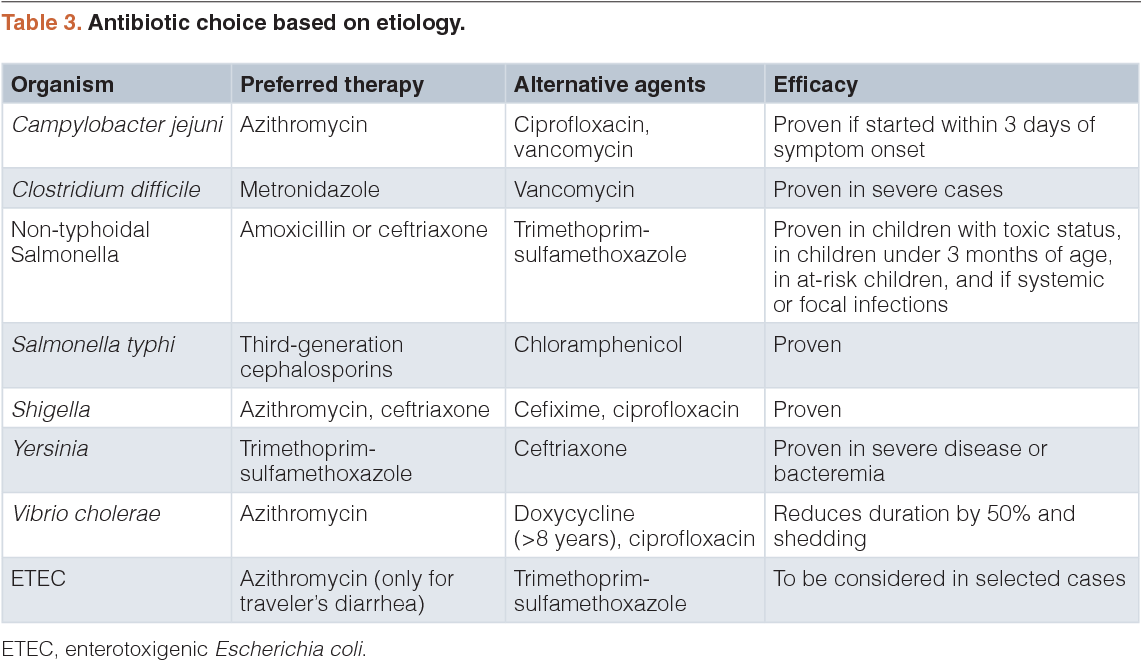 The drug information contained herein is subject to change and is not intended to cover all possible uses, directions, precautions, warnings, drug interactions, allergic reactions, or adverse effects. The absence of warnings or other information for a given drug does not indicate that the drug or drug combination is safe, effective, or appropriate for all patients or all specific uses.
The drug information contained herein is subject to change and is not intended to cover all possible uses, directions, precautions, warnings, drug interactions, allergic reactions, or adverse effects. The absence of warnings or other information for a given drug does not indicate that the drug or drug combination is safe, effective, or appropriate for all patients or all specific uses.
Antibiotic safety
Color scheme
C
C
C
C
Font
Arial
Times New Roman
Font Size
A
A
A
Kerning
1
2
3
Pictures
Regular site
- 0025
- Antibiotic safety
Patients and Visitors
September 17, 2022 08:09
Views: 585
Antibiotic resistance is one of the most serious threats to human health, food security and development today. It can affect anyone, at any age and in any country. It results in longer hospital stays, higher medical costs and higher mortality.
It can affect anyone, at any age and in any country. It results in longer hospital stays, higher medical costs and higher mortality.
To prevent resistance of microorganisms to antibiotics, the following simple rules must be observed:
- Keep your hands clean. Regular handwashing is the best way to remove germs, prevent their spread, and also avoid disease. Be especially careful when staying in a hospital: it is in medical organizations that resistant forms of pathogenic microbes are most often found.
- Make sure your visitors and caregivers follow hand hygiene guidelines.
- Tell your doctor if you suspect you have an infection or if you don’t get better with treatment.
- Tell your doctor if you have recently received medical attention or have had an infection.
- Take antibiotics only as directed by your doctor. Remember, taking antibiotics without a doctor’s prescription puts you at unnecessary risk of side effects and potentially serious future infections.
 Antibiotics are never used for viral diseases. Many bacterial diseases go away on their own and do not require antibiotics.
Antibiotics are never used for viral diseases. Many bacterial diseases go away on their own and do not require antibiotics. - Never take an antibiotic on your own just because it was given to you for a past illness, or because it was given to someone you know in a similar situation.
- If the doctor has prescribed an antibiotic, take it as prescribed in the prescription – do not change the dosage (a large dosage will not lead to a faster effect), do not skip a dose (set a reminder on your phone or download a special application).
- Do not stop treatment until the end of the prescribed course, even if your condition has improved significantly. If you stop before the infection is completely eradicated, the bacteria are more likely to become drug resistant.
- Do not store leftover antibiotics after the end of a course of treatment.
- Beware of life-threatening diarrhea caused by Clostridium. If you notice 3 or more episodes of diarrhea during the day while taking antibiotics, be sure to tell your doctor about it.
 Remember: loose stools can be an expected and harmless side effect of antibiotics. If you are having surgery, ask your doctor or nurse how you should prepare to reduce your risk of infection.
Remember: loose stools can be an expected and harmless side effect of antibiotics. If you are having surgery, ask your doctor or nurse how you should prepare to reduce your risk of infection. - Vaccinate according to age to reduce the risk of severe forms of preventable infectious diseases.
Next news
news
Antibiotic treatment for spontaneous bacterial peritonitis in people with advanced liver disease
What is the purpose of this Cochrane Review?
Find the best available antibiotic for spontaneous bacterial peritonitis (accumulation of fluid in the abdomen (abdomen) infected with bacteria) in people with advanced liver disease (cirrhosis of the liver or advanced scarring of the liver with complications). The abnormal accumulation of fluid in people with cirrhosis of the liver is called ascites. Sometimes this fluid can become infected with bacteria, with no obvious source of infection.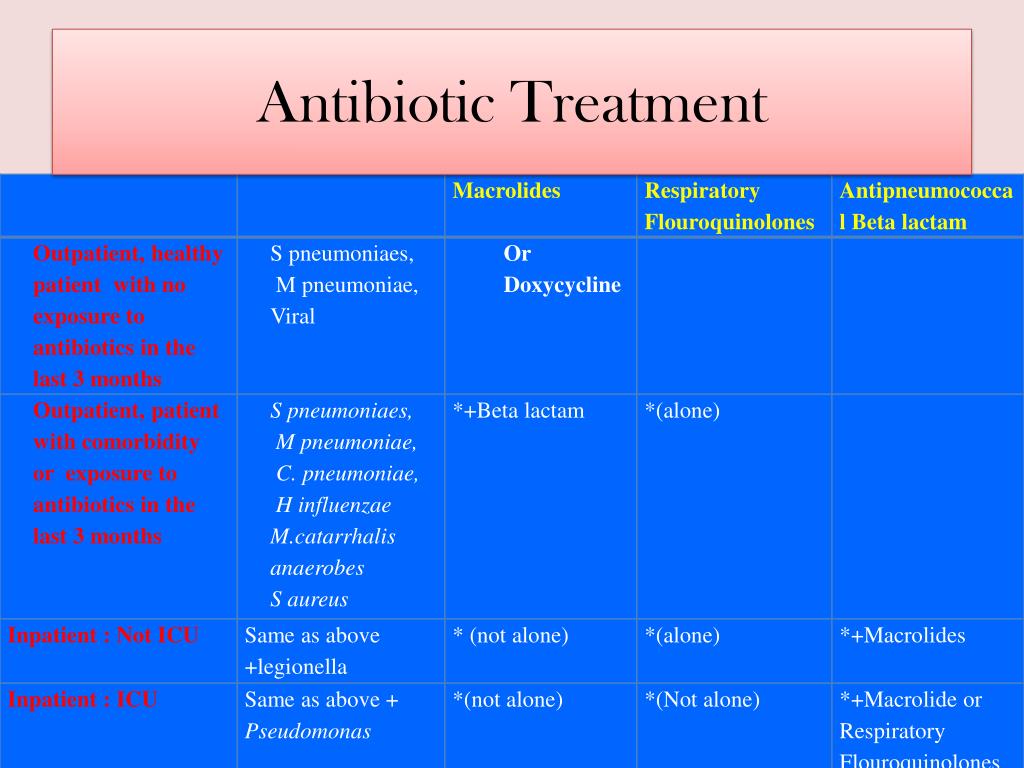 This is called “spontaneous bacterial peritonitis”. The main treatment for spontaneous bacterial peritonitis is antibiotics, but it is not clear which antibiotic is best for treating it. The authors collected and analyzed all relevant studies to answer this question and found 12 randomized clinical trials (participants received treatment based on a coin tossing method, this ensures that people who receive different treatments are similar in all aspects, other than treatment, so any differences between treatment outcomes can be attributed to treatment rather than differences between the types of people who received treatment). When analyzing the data, the authors used standard Cochrane methods, which allow comparison of two types of treatment at the same time. The authors also used advanced methods that allow many treatment options to be compared simultaneously (so-called “network meta-analysis” or “multiple treatment comparisons”). The purpose of the review is to gather reliable evidence about the relative benefits and harms of different types of antibiotics.
This is called “spontaneous bacterial peritonitis”. The main treatment for spontaneous bacterial peritonitis is antibiotics, but it is not clear which antibiotic is best for treating it. The authors collected and analyzed all relevant studies to answer this question and found 12 randomized clinical trials (participants received treatment based on a coin tossing method, this ensures that people who receive different treatments are similar in all aspects, other than treatment, so any differences between treatment outcomes can be attributed to treatment rather than differences between the types of people who received treatment). When analyzing the data, the authors used standard Cochrane methods, which allow comparison of two types of treatment at the same time. The authors also used advanced methods that allow many treatment options to be compared simultaneously (so-called “network meta-analysis” or “multiple treatment comparisons”). The purpose of the review is to gather reliable evidence about the relative benefits and harms of different types of antibiotics.
Literature search date
November 2018.
Key information
None of the studies have been conducted without flaws, and due to the very low certainty in the results, the authors cannot suggest which antibiotic, given alone or in combination, to eliminate bacteria from the abdomen is better or worse than other antibiotics in the treatment of spontaneous bacterial peritonitis .
Funding source was unclear in 10 studies; industry organizations funded two studies.
What was learned in this review?
This review studied people of different sex, age and background, with progressive liver disease of various etiologies, who developed spontaneous bacterial peritonitis. People have been prescribed various antibiotics to treat spontaneous bacterial peritonitis. The authors excluded studies with participants undergoing liver transplantation and bacterial peritonitis due to other causes. Participants’ ages when reported ranged from 42 to 60 years. The number of women when this was reported ranged from 18 to 42 out of 100. Antibiotic groups prescribed were cephalosporins, penicillins and quinolones. The review authors planned to collect and analyze data on mortality, quality of life, major and non-serious complications, time to liver transplantation (replacing a diseased liver with a healthy one), time to resolution of spontaneous bacterial peritonitis, and resolution of symptoms.
The number of women when this was reported ranged from 18 to 42 out of 100. Antibiotic groups prescribed were cephalosporins, penicillins and quinolones. The review authors planned to collect and analyze data on mortality, quality of life, major and non-serious complications, time to liver transplantation (replacing a diseased liver with a healthy one), time to resolution of spontaneous bacterial peritonitis, and resolution of symptoms.
What are the main findings of this review?
The 12 studies included a small number of participants (1278 participants). Research data were scarce; data for analysis were obtained from 10 studies with 893 participants. The follow-up period in the trials ranged from one week to three months. This review shows the following.
– Of 13 different antibiotics compared in clinical trials, intravenous ceftriaxone and cefotaxime were the most frequently used.
– The type of antibiotic may not affect the number or percentage of people with serious complications or any complications; number of (any) complications per person; the percentage of people who have had a liver transplant; or those who have recovered from spontaneous bacterial peritonitis as determined by laboratory tests or other complications of cirrhosis.
– Twenty-five out of every 100 people died within three months, and 75 out of every 100 people recovered from spontaneous bacterial peritonitis.
– None of the trials reported on health-related quality of life, number of serious adverse events, or symptomatic recovery from spontaneous bacterial peritonitis.
– We have very low confidence in the overall results. Whether some antibiotics may result in greater or lesser benefit or harm than others when given to people with advanced liver disease and spontaneous bacterial peritonitis remains unclear.
– We need data from clinical trials of good design and quality to identify the best antibiotic for spontaneous bacterial peritonitis.
Translation notes:
Translation: Turankova Taisiya Alekseevna Editing: Yudina Ekaterina Viktorovna. Project coordination for translation into Russian: Cochrane Russia – Cochrane Russia on the basis of Kazan Federal University. For questions related to this translation, please contact us at: cochrane.

 If you have any of these symptoms, contact your doctor right away.
If you have any of these symptoms, contact your doctor right away. If your diarrhea is mild, it may stop after you stop taking this drug. If your diarrhea is more severe, it may not stop after you stop taking this drug, and you could be at risk of severe dehydration. If you have severe diarrhea, your doctor may give you fluids and treat the bacteria causing your diarrhea with antibiotics. Check with your doctor before treating diarrhea.
If your diarrhea is mild, it may stop after you stop taking this drug. If your diarrhea is more severe, it may not stop after you stop taking this drug, and you could be at risk of severe dehydration. If you have severe diarrhea, your doctor may give you fluids and treat the bacteria causing your diarrhea with antibiotics. Check with your doctor before treating diarrhea.
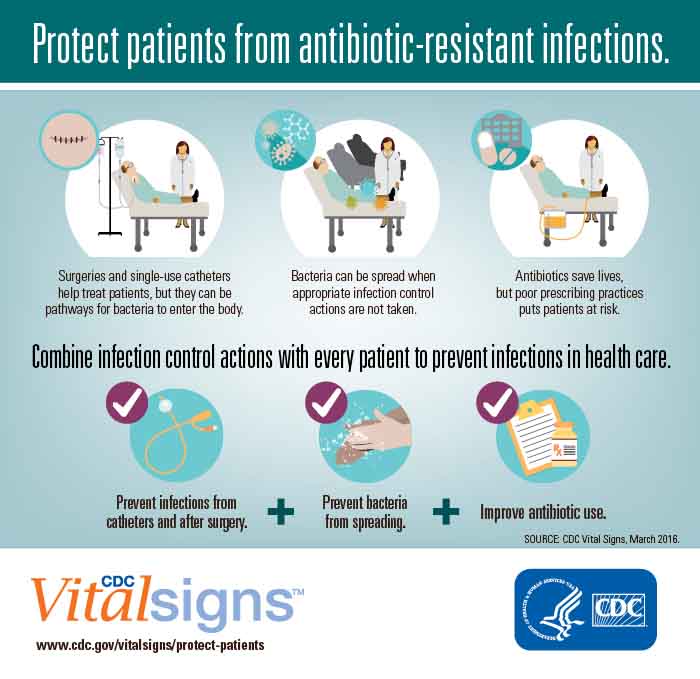
 Length of treatment varies.
Length of treatment varies.

 Antibiotics are never used for viral diseases. Many bacterial diseases go away on their own and do not require antibiotics.
Antibiotics are never used for viral diseases. Many bacterial diseases go away on their own and do not require antibiotics.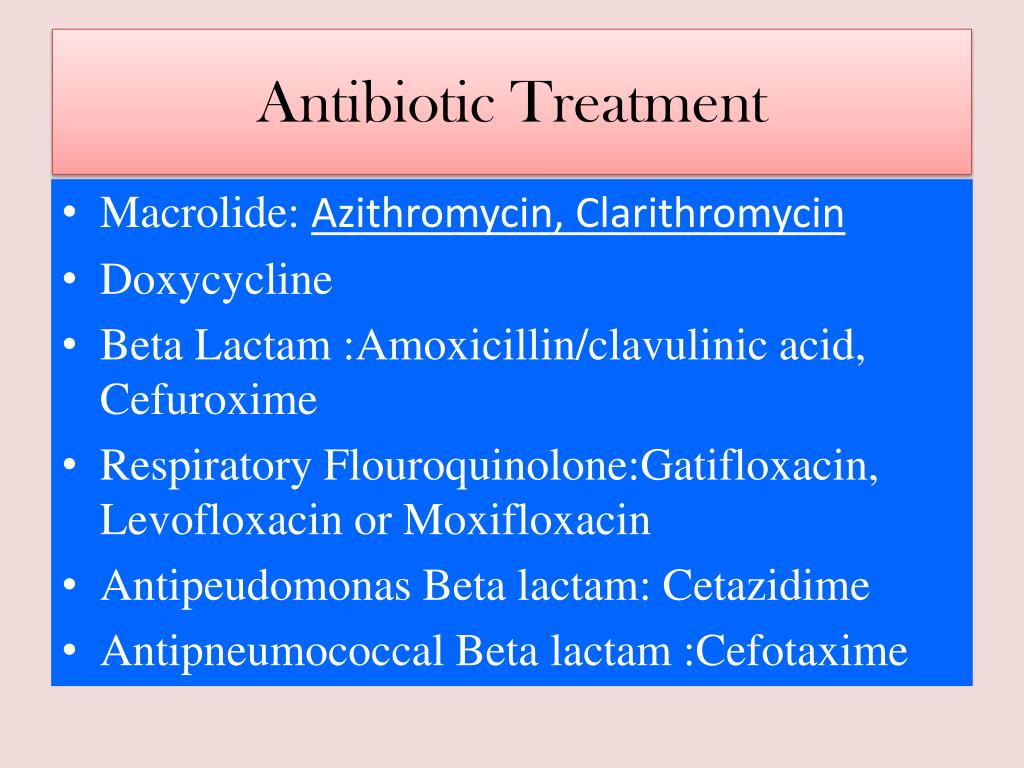 Remember: loose stools can be an expected and harmless side effect of antibiotics. If you are having surgery, ask your doctor or nurse how you should prepare to reduce your risk of infection.
Remember: loose stools can be an expected and harmless side effect of antibiotics. If you are having surgery, ask your doctor or nurse how you should prepare to reduce your risk of infection.